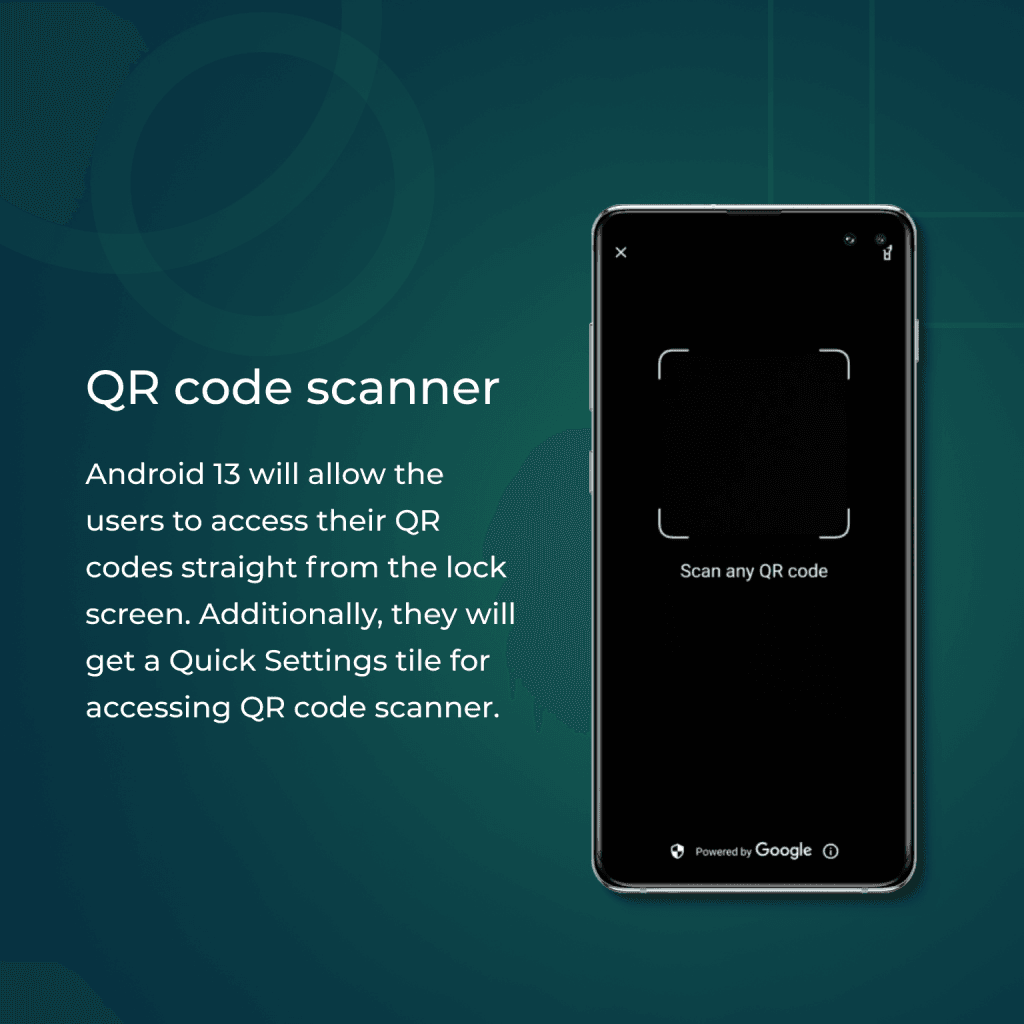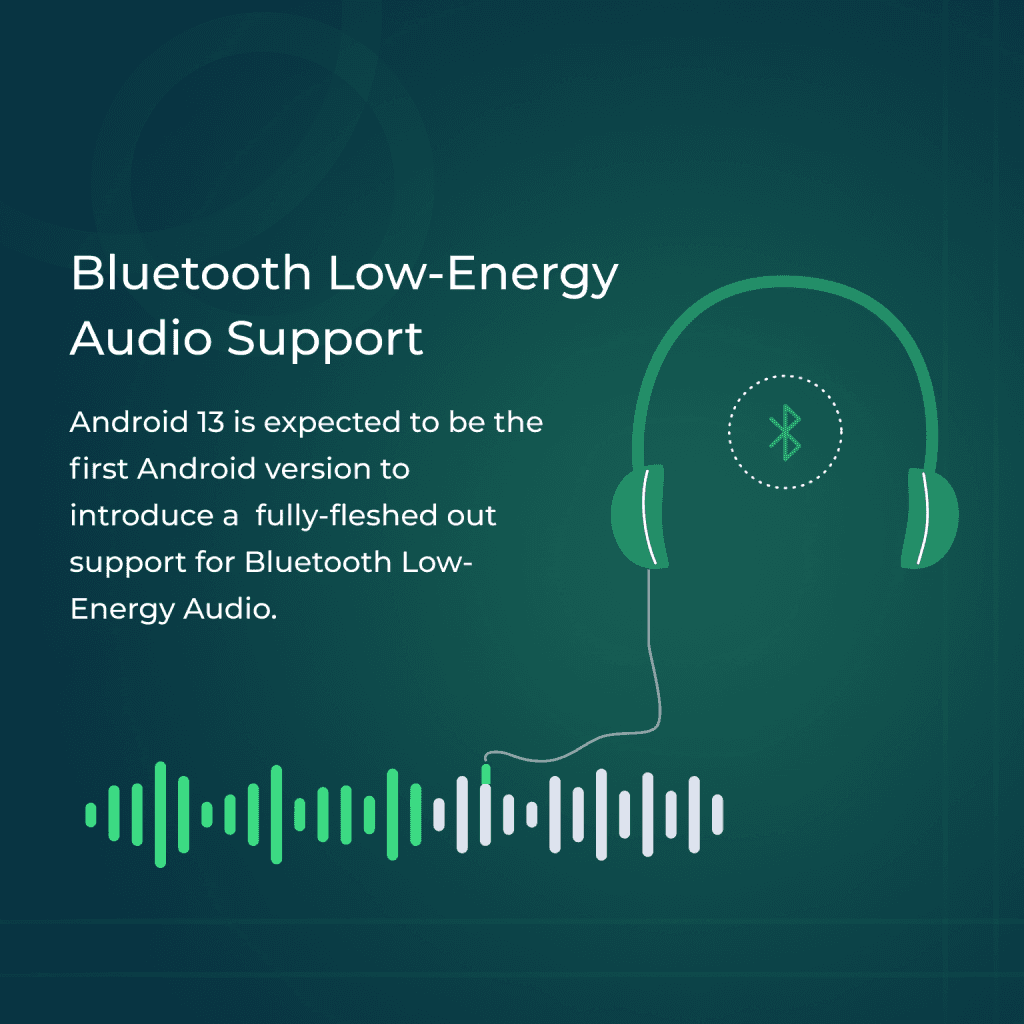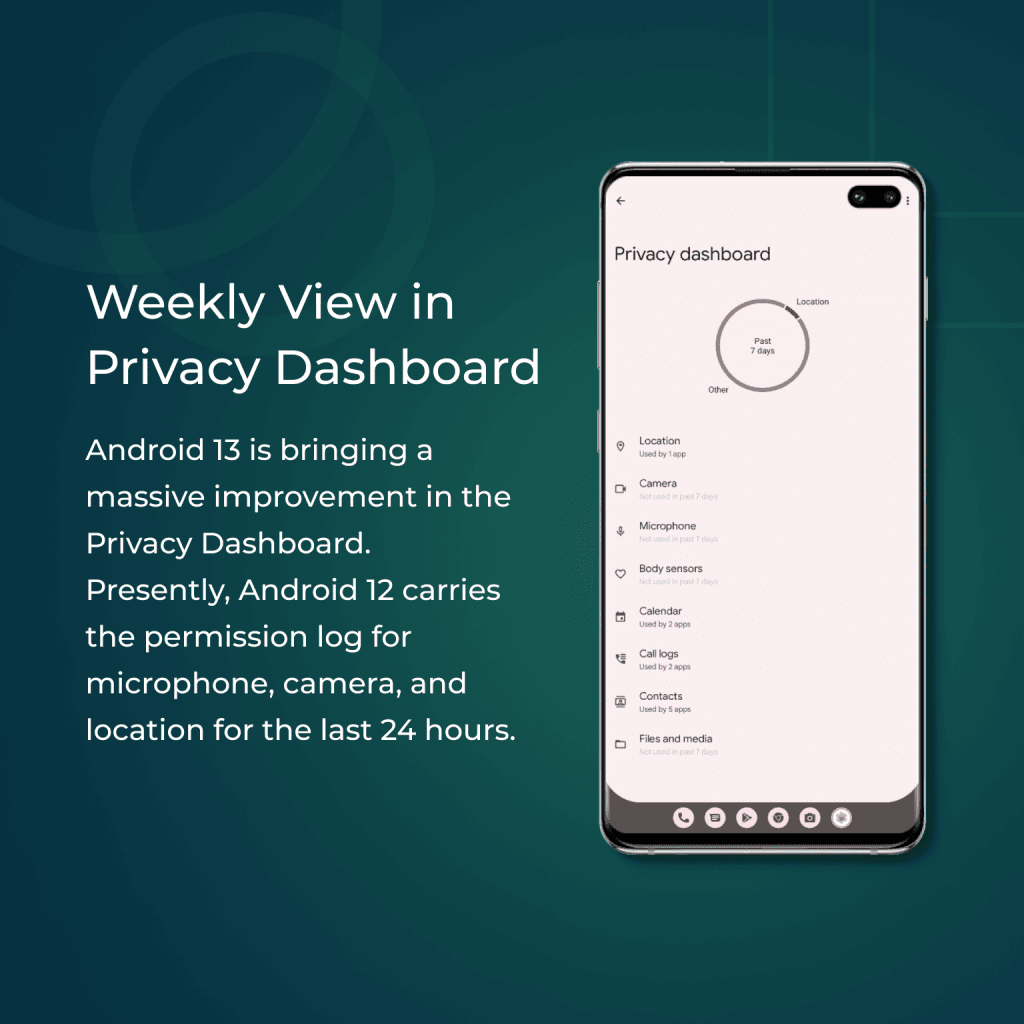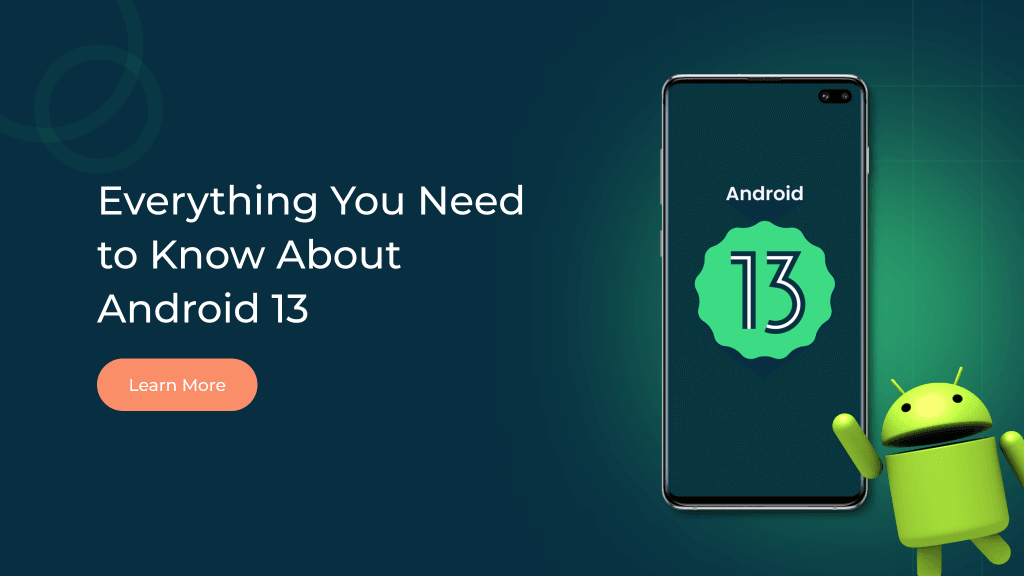While you were still waiting for Android 12 to be launched on your device, Google has started the preparation of its next version – Android 13 to come into existence.
Irrespective of how much time a version takes for a global rollout, Google keeps up with its tradition of launching a new version every year like clockwork. 2022 is no different. Last month, Google released the developer preview version of Android 13, giving every Android app development company under the sun, reasons to get excited.
In this article, we are going to look into Android 13 and what features it would bring to the table.
Android 13 DP1
The Android 13 developer preview was released in early February. It came soon after the OS giant finished the development of its Android 12L version focused on foldable, tablets, and big-screen devices.
Like every prior developer preview, Android 13 also focuses on setting the foundation of what is there to come. Before its launch in the summer of this year, Google plans on releasing a new beta version every month for the next 6 months.
While we will have to wait for Google I/O for the extensive view of Android 13, we are assuming it to be behind the curtains, especially since Android 12 saw a complete redesign.
The Probable List of Android 13 Features
There are a number of features and new developments poised to change the android app development services for the better. Let us look at them.
- Material You Color Scheme
Android 13 is expected to give users a brand new palette for wallpaper colors.
Going a step beyond the “tonal spots” colors, Google will give the device manufacturers access to three methods & Vibrant, Expressive, and Spritz.
- Opt-in Notification
XDA recently spotted Android 13 asking for permission to show notifications for the newly installed applications.
Like the generic permission prompts, it would also pop when the app runs for the first time, giving users the option to either deny or allow the notifications altogether.
- QR Code Scanner

It is unclear whether it will be a shortcut to specific QR code-accessing camera mode or if it would enable the users to directly point their phone at the QR code from within the lockscreen.
- Panlingual App Language Setting
Android 13 is going to introduce an option where the users are able to set their preferred language on per-app basis. If your app is built for a global audience, the feature will come in handy as the users will be able to select their preferred language in your app.
- Battery Usage
Android 12 came with a brand new battery-saving measure for the users which made apps difficult to run in the background. Known as PhantomProcessKiller. Android 13 is going to come with a toggle in developer options that would allow the power users to turn off this facility for edge cases like in Termux.
Google is also coming up with a new feature known as “TARE”. It will monitor how the different apps running in the background, the tasks they perform, etc. On the basis of this monitoring, Google would limit its ability to schedule jobs for the future.
- UWB Support
UWB is an amazing technology that brings in a range of new applications. It turns users’ phones into car keys, helps them find lost gadgets, and amplifies the features that were once possible only through bluetooth and NFC.
Android 13 will add in a hardware abstraction layer which would give the Android devices a common foundation for the working of UWB. Moreover, it would make it easier for the developers to add these futuristic features in the android app development services list of offerings.
- Bluetooth Low-Energy Audio Support

This new feature is set to bring a number of improvements to the table –
- low energy consumption at same audio quality.
- multi-streaming support that sends signals to both earbuds at same time.
- full support for the features powered by Google’s hearing aid standards.
- Home Button Assistant Toggle
Gesture navigation might be the future of how a user interacts with their phone. However, three-button navigation is what users continue to be comfortable with. Therefore, the three-button navigation is going to return to Android 13. In the new version, users will get the option to disable the gesture which lets them long-press the home button to access Assistant.
- Changes in Output Picker Interface
Android 10 came with an output picker for audio, which enabled the users to choose how they would like to listen to audio – on the smartphone, wireless headphones, or Bluetooth speakers.
Android 13 is coming with a redesign of the interface, wherein, a much prettier volume slider would be given for all the connected devices.
- Lockscreen
Google might be working on a toggle to display its huge clock, called the “Double-line clock.”
Another feature that might be coming on the lock screen is ‘account switcher’. It would make it very easy for another user to log in to a shared device while keeping their privacy intact.
- Gaming Enhancements
While not much has been introduced in the first developer preview version in the gaming department, a new API has been launched in the AOSP code. It will enable the games to temporarily boost up the CPU speed when they are loading, which would enable a faster launch of the titles.
- Photo Picker
Google’s new photo picker is very similar to how Apple manages photos on the iPhone. In the new feature, Google would separate photos in their own menu instead of displaying all the documents in one layout.
Since the feature was not made available in DP1, it is yet to be seen how it would operate in the real world.
- Quick Setting Placement API
The android app developers have had the option of adding tiles to the Android’s quick setting menu for some years now. But with Android 13, it will get all the easier.
The Quick Settings Placement API would enable the apps to advertise the tiles through a pop-up notification by making the presence of these shortcuts and tools more obvious to the smartphone users.
- Themed Icon for Third-party Apps
Google is adding dynamic color-themed icons options available in all the app icons with Android 13.
The android app developers will need to use a monochrome app icon and then update the adaptive icon XML to add in the themed app icons to support their apps.
It is speculated that the themed third-party icons feature will first come on Pixel phones, and then it will work on other device OEMs.
- Weekly View in Privacy Dashboard

Post the version launch, users will get the option to see the permission log for the last seven days.
- Tap to Transfer Media Playback
Android might come with a media tap to transfer facility. It can help users switch media between their phones and devices. Expected to work on UWB or NFC to transfer the media playback, the feature would enable users to transfer media playback as they do from iPhone to HomePod.
- DNS over HTTPS Support
Google first introduced DNS-over-TLS in Android 9, and the facility, since then, has been around as “Private DNS”. XDA Developers found that Google is now planning to support the DNS-over-HTTPS (DoH) feature in Android 13.
Over the past few years, some of the popular web browsers like Firefox and Google Chrome have introduced DoH. It is now Android’s turn to initiate it.
Now that we have looked into the probable features that are going to be present in Android 13, it is time to address the one question that every android app development company and enthusiast wants to know.
What is Android 13 Called?
For Android 13, the name has been confirmed to be called ‘Tiramisu’ – another dessert name followed upon Snow Cone for Android 12, Red Velvet Cake for Android 11, and Quince Tart for Android 10.
So here is everything we know about Android 13 till now. We will have to wait for this year’s Google I/O conference to see what news is coming up in 13 and how it will impact the Android developer ecosystem. Meanwhile, bookmark our blog to be updated with all the new happenings in the digital world.










Leave a Comment
Your email address will not be published. Required fields are marked *